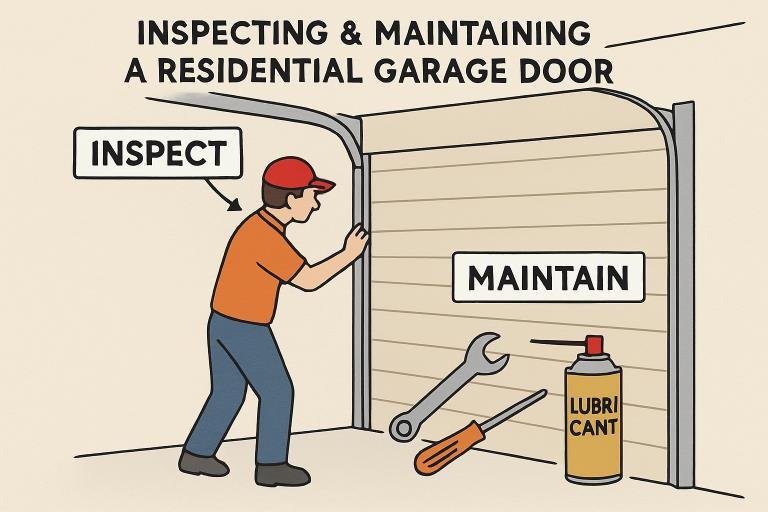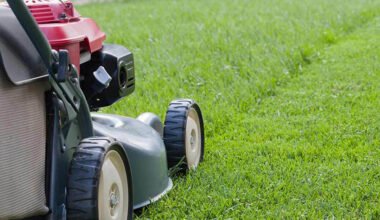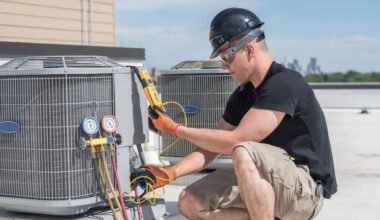Key Takeaways
- Regular inspection and maintenance can prevent major garage door issues.
- Lubricating moving parts ensures smooth operation and reduces wear.
- Testing safety features like the auto-reverse mechanism is essential for safety.
- Professional assistance is recommended for complex repairs.
Ensuring your garage door operates smoothly is key to your home’s safety, security, and daily convenience. Focusing on regular upkeep can help prevent unexpected issues and costly repairs. If you’re new to home maintenance or considering seeking professional help, garage door experts in Poway can provide the right solutions for all repair and maintenance needs.
Routine attention enhances the overall performance of your garage door system and extends its lifespan. Homeowners in every region can benefit from consistent maintenance, especially when you tap into reliable, local expertise for complex repairs or ongoing support.
Regular Inspection and Maintenance
Taking the time to inspect your garage door system regularly is the cornerstone of proper maintenance. Look for any signs of wear, such as frayed cables, worn or misaligned rollers, or loose hardware. Watch and listen as your garage door opens and closes—the movement should be smooth, free from jerking or grinding sounds. If you detect anything unusual, such as a door that barely opens or closes unevenly, immediate attention can prevent more severe damage and ensure daily functionality.
Lubricate Moving Parts
Friction between moving components is a prime source of wear and tear. Lubricate all hinges, rollers, and springs with a high-quality, silicone-based garage door lubricant at least twice a year. This keeps your door’s operation quiet and efficient, and helps prevent parts from seizing due to rust and corrosion. Avoid heavy-duty grease or WD-40, which can attract dust and grit and clog up the moving parts.
Test the Auto-Reverse Safety Feature
The auto-reverse mechanism is a crucial safety feature that prevents the garage door from closing when something obstructs its path. To test this feature, place a small object—like a block of wood—under the door while it’s open, then close it. The door should recognize the obstruction and reverse automatically. If it doesn’t, consult your owner’s manual for troubleshooting steps or call a professional, as a malfunctioning safety feature poses a serious risk, especially to children and pets.
Clean and Maintain Door Tracks
Dust, leaves, and spider webs can collect in your garage door’s tracks, causing problems when the door opens or closes. Use a clean, damp cloth to wipe the inside and outside of the tracks, removing any build-up. A mild household cleaner can be applied to stubborn grime. Do not lubricate the tracks, as this can have the opposite effect and attract more dirt, leading to blockages and future functional problems.
Inspect Weatherstripping for Wear and Tear
Garage door weatherstripping keeps out drafts, rain, pests, and dust. However, over time, weatherstripping can degrade, dry out, or crack, especially if your garage is exposed to direct sunlight or extreme weather. Check the bottom and edges of the door for any gaps or worn spots. Replacing old weatherstripping is an easy DIY job that keeps your garage energy efficient and comfortable year-round.
Keep the Opener and Remote Control in Good Condition
Regularly test your garage door opener by listening for unusual noises and ensuring it responds quickly to the remote control. Replace the batteries in your remote at the first sign of lag. Suppose you notice slow response times, inconsistent operation, or strange sounds from the opener. In that case, it may indicate the need for professional servicing or even replacing the opener unit to ensure continued convenience and security for your home.
Tighten Loose Bolts and Nuts
Your garage door moves up and down hundreds of times each year, causing routine vibrations that can loosen bolts, screws, and nuts. Periodically check the entire door assembly, especially where the mounting brackets attach to the wall and ceiling. Use a socket wrench to tighten any loose hardware to maintain the stability and safety of the garage door system.
Replace Damaged Parts
Components like torsion springs, cables, and rollers will eventually show signs of wear with regular use. Inspect these parts and look for rust, fraying, or breaks. Because they are often under high tension, it’s strongly recommended that a professional handle replacements or repairs to avoid personal injury and ensure proper installation.
Schedule Professional Maintenance and Repairs
While homeowners can complete many maintenance tasks, certain repairs or inspections should be handled by experienced technicians. Scheduling periodic check-ups with a certified garage door professional is a wise precaution. These trained experts can spot subtle problems, make necessary adjustments, and keep your system running at peak performance. For specialized help or ongoing service, it’s always a good choice to contact professionals in your area who are trained to handle even the most complex repairs safely and efficiently.
Conclusion
Keeping your garage door in top condition requires routine care and timely professional support. Inspecting, lubricating, and testing your system regularly can avoid costly breakdowns and extend its lifespan. Simple preventive steps—like cleaning tracks, replacing weatherstripping, and tightening hardware—enhance safety, security, and performance. For more complex issues, relying on trained garage door technicians ensures repairs are done safely and correctly, giving you peace of mind and a door that works smoothly for years to come.






